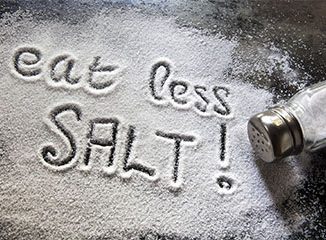
Food manufacturers and consumers will need to reduce salt in their food by at least 30 per cent if New Zealand is to meet a global target for sodium reduction by 2025.
A 36 per cent reduction (1.6g salt or 628mg sodium) in the sodium content of packaged foods, and a 40 per cent reduction in salt added to food and the sodium content of foods consumed away from the home would reduce total population salt intake in New Zealand by 35 per cent.
Theoretical reductions required include an average decrease of 21 per cent in the sodium content of white bread, 27 per cent for hard cheese, 42 per cent for sausages, and 54 per cent for ready-to-eat breakfast cereals.
New Zealand has committed to the sodium target as part of nine voluntary targets proposed by the World Health Organization’s (WHO) “global monitoring framework on non-communicable diseases” to reduce the incidence of diseases such as heart disease, stroke, and cancer.
“Achieving the WHO sodium target in New Zealand will need considerable efforts by both food manufacturers and consumers, and ideally a national Government-led sodium reduction strategy,” senior lecturer and researcher, Dr Helen Eyles from the University of Auckland’s National Institute for Health Innovation, says.
In a study published in the American Journal of Clinical Nutrition this week, Dr Eyles’ team linked nationally representative household food purchasing data for New Zealand with branded food composition (nutrient) information.
This helped determine the average contribution of major packaged food categories to total population sodium consumption.
They developed a sodium reduction model to determine the reductions required in the sodium content of packaged foods and other dietary sources of sodium to reduce adult population salt intake by 30 per cent, towards the optimal WHO target of 5g/day.
Researchers emphasise that work still needs to be to ensure the technical feasibility of the reductions, especially seeing as for some categories, they are quite large.
“Excess sodium intake is one of the top two dietary risk factors contributing to the global burden of disease, and many countries are now developing multi-faceted national sodium reduction strategies”, Dr Eyles says. “A key component of these strategies is a government-led sodium reduction model including sodium targets for packaged foods and other sources of dietary sodium.
“A New Zealand population salt reduction target could be voluntary in the short term, but if it doesn’t work as a voluntary target, there could be a move to mandate it and make it compulsory in time,” Dr Eyles says.
“The United Kingdom has a target that is voluntary, but they also have a strong government- led approach to achieving the sodium target.
“In New Zealand some manufacturers have made changes to lower the sodium content of their products, but newer products are coming to the market all the time with high sodium content so we are making little progress overall.”
The project was supported by a Health Research Council of New Zealand programme grant.

